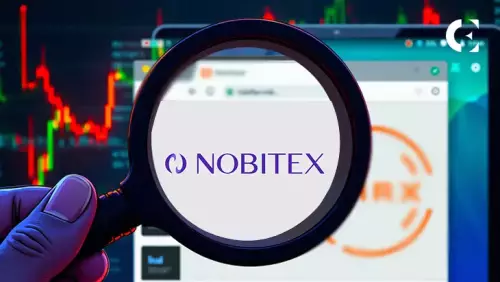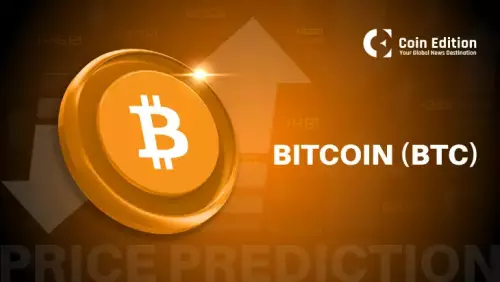 |
|
 |
|
 |
|
 |
|
 |
|
 |
|
 |
|
 |
|
 |
|
 |
|
 |
|
 |
|
 |
|
 |
|
 |
|
Stake 通常是維護 PoS 網路安全的主要方式。對於 PoS 網路來說,網路中參與驗證人質押的資產越多、分散,網路的安全性就越好。

Singapore, June 11, 2024 (GLOBE NEWSWIRE) — Staking is usually the main way to maintain the security of the PoS network. For a PoS network, the more assets in the network participate in the validator staking and the more dispersed they are, the better the network’s security. Usually, starting from the PoS network itself, they provide incentives to validators, firstly to reward them as contributors, and secondly to encourage more validators to participate in network staking and verification.
新加坡,2024 年 6 月 11 日(環球通訊社)—質押通常是維護 PoS 網路安全的主要方式。對PoS網路來說,網路中參與驗證人質押的資產越多、越分散,網路的安全性越好。通常,他們從PoS網路本身開始,對驗證者進行激勵,首先獎勵他們作為貢獻者,其次鼓勵更多的驗證者參與網路質押和驗證。
In fact, for any PoS network, it is unrealistic to allow token holders to independently participate in the network validator staking. One is the cost perspective. For example, the minimum threshold for Ethereum’s PoS validator is 32 ETH. Based on the price of ETH 3,800 US dollars, the cost threshold to directly become a validator is about 121,600 US dollars, but the APR is only 2.21%, and the capital utilization rate is extremely low. On the other hand, the staker needs to have the ability to run the client independently to avoid fines. Overall, it is unrealistic for non-professional token holders to directly participate in the staking of any network as a validator.
事實上,對於任何 PoS 網路來說,讓代幣持有者獨立參與網路驗證人質押都是不切實際的。一是成本角度。例如,以太坊的 PoS 驗證器的最低門檻是 32 ETH。以ETH 3,800美元的價格計算,直接成為驗證者的成本門檻約為12.16萬美元,但年化利率僅2.21%,資金利用率極低。另一方面,質押者需要有能力獨立運行客戶端以避免罰款。整體而言,非專業代幣持有者作為驗證者直接參與任何網路的質押是不切實際的。
Therefore, the emergence of the liquidity derivative pledge track, namely LSD, just solves the above pain points. On the one hand, token holders can entrust token pledges to the LSD protocol (no capital scale is required, usually assets worth tens or even tens of US dollars can participate), and the protocol will participate in the pledge of the PoS network on behalf of the pledger, and return part of the income to the pledger. At the same time, the LSD protocol will also return an LST token to the pledger, which is equivalent to the value of the pledged assets and can be used to obtain new income in LSTFi to improve the utilization rate of funds. This has a good driving effect on improving the pledge rate of the PoS network.
因此,流動性衍生品質押賽道,即LSD的出現,正好解決了上述痛點。一方面,代幣持有者可以將代幣質押委託給LSD協議(無需資金規模,通常價值幾十甚至幾十美元的資產都可以參與),協議將代表參與PoS網路的質押質押人的收益,並將部分收入回饋給質押人。同時,LSD協議也將向質押者返還一個LST代幣,相當於質押資產的價值,可用於在LSTFi中獲得新的收益,提高資金利用率。這對於提高PoS網路的質押率有很好的帶動作用。
Except for the Ethereum ecosystem, other ecosystems are not large in LSD
除以太坊生態外,其他生態系LSD規模都不大
However, from the current LSD track, except for the Ethereum ecosystem, the LSD scale of other networks is not large. On the one hand, in terms of scale, the current liquidity pledge scale of Ethereum is 13 million Ethereum, about 50.23 billion US dollars. According to the current 32 million Ethereum participating in the pledge in the Ethereum beacon chain, the liquidity pledge accounts for about 40.6%.
但從目前LSD賽道來看,除了以太坊生態之外,其他網路的LSD規模並不大。一方面,從規模來看,目前以太坊的流動性質押規模為1,300萬枚以太坊,約約502.3億美元。以目前以太坊信標鏈中參與質押的 3,200 萬枚以太幣計算,流動性質押約佔 40.6%。
In addition to Ethereum, other PoS ecosystems such as Cosmos and BNB Chain are relatively small in scale, and the ratio of liquidity staking sources is not high. For example, among the ATOM tokens staked by Cosmos, although its overall staking rate is as high as about 63%, only about 2% comes from liquidity equity.
除以太坊外,Cosmos、BNB Chain等其他 PoS 生態規模均較小,流動性質押來源比例不高。例如,Cosmos 質押的 ATOM 代幣中,雖然其整體質押率高達 63% 左右,但來自流動性權益的僅佔 2% 左右。
On the other hand, although LSD projects are rising, the leading LSD protocols represented by Lido, Rocket, Binance Staked, etc. have obvious monopoly effects in the field of ETH LSD staking, among which Lido alone accounts for 75% of the entire ETH LSD market share, and the market share of emerging LSD protocols is extremely low. In particular, the leading LSD protocols such as Lido are centralized models, which may have the risk of monopolizing most of the proportion, reducing the overall income of the LSD sector, and reducing the staking desire of the pledgers. In addition, excessive concentration of funds may cause security risks to the PoS ecosystem.
另一方面,雖然 LSD 項目不斷崛起,但以 Lido、Rocket、Binance Staked 等為代表的領先 LSD 協議在 ETH LSD 質押領域具有明顯的壟斷效應,其中僅 Lido 就佔據了整個 ETH 的 75% LSD市場份額,新興LSD協議的市佔率極低。尤其是 Lido 等領先的 LSD 協議都是中心化模式,可能存在壟斷大部分比例、降低 LSD 行業整體收入、降低質押者質押意願的風險。此外,資金過度集中可能會為PoS生態帶來安全風險。
In addition to LSD, the re-staking track centered on EigenLayer, namely the LRT track, is also centered around the Ethereum ecosystem. Some LRT protocols including Kyper DAO, Renzo, Ether.fi, EigenPie, YieldNest, Swell, etc. are all built around LST and ETH assets to provide staking services, and lack support for native tokens on other chains. Similarly, EigenLayer also has shortcomings in maintaining network security. For example, in a PoS network, if EigenLayer’s incentive mechanism conflicts with the existing PoS incentive mechanism, it may reduce the validator’s commitment to network security. EigenLayer may cause some validators to gain more rights and control, thereby increasing the centralization risk of the network. Centralized networks are more vulnerable to attacks and manipulation, weakening overall security.
除了LSD之外,以EigenLayer為中心的重質押賽道,即LRT賽道,也以以太坊生態為中心。一些LRT協議包括Kyper DAO、Renzo、Ether.fi、EigenPie、YieldNest、Swell等都是圍繞LST和ETH資產構建的,提供質押服務,缺乏對其他鏈上原生代幣的支持。同樣,EigenLayer在維護網路安全方面也存在不足。例如,在PoS網路中,如果EigenLayer的激勵機制與現有的PoS激勵機制相衝突,則可能會降低驗證者對網路安全的承諾。 EigenLayer可能會導致一些驗證者獲得更多的權利和控制權,從而增加網路的中心化風險。中心化網路更容易受到攻擊和操縱,從而削弱整體安全性。
So overall, LSD and LRT may not be the best solutions for PoS ecosystem to obtain security:
所以整體而言,LSD和LRT可能不是PoS生態系獲得安全性的最佳解決方案:
* The LSD sector is severely monopolized and centralized. The scale of pledged income has decreased due to monopoly and it threatens the security of the PoS network, which deviates from the original intention of PoS.
* LSD產業嚴重壟斷與集中。質押收益規模因壟斷而減少,威脅到PoS網路的安全,背離了PoS的初衷。
* The multi-layer nesting model of LSD and LRT is risky, especially since some of the leading LSD protocols are too large in scale. Once a security problem occurs and a run occurs, it will be catastrophic for the Ethereum ecosystem. The Terra ecosystem is a lesson for this.
* LSD和LRT的多層嵌套模型存在風險,特別是一些領先的LSD協定規模太大。一旦出現安全問題,發生擠兌,對以太坊生態來說將是災難性的。 Terra 生態系統就是這方面的一個教訓。
* The LSD and LRT tracks are mainly based on Ethereum. It is difficult for other PoS ecosystems
* LSD和LRT軌道主要基於以太坊。其他PoS生態系很難
免責聲明:info@kdj.com
所提供的資訊並非交易建議。 kDJ.com對任何基於本文提供的資訊進行的投資不承擔任何責任。加密貨幣波動性較大,建議您充分研究後謹慎投資!
如果您認為本網站使用的內容侵犯了您的版權,請立即聯絡我們(info@kdj.com),我們將及時刪除。
-

- 比特幣、Zcash 和加密貨幣市場:應對不確定性
- 2025-10-22 20:00:47
- 比特幣的價格波動、山寨幣行為和市場情緒。提供的文章中未提及 Zcash。對加密貨幣市場的展望。
-

-

-

- 嘉手納的價格暴跌和項目關閉:下一步是什麼?
- 2025-10-22 20:00:00
- 由於市場狀況導致業務運營停止,嘉手納面臨不確定性,導致價格大幅下跌。這對 KDA 的未來意味著什麼?
-

-

- 受限市場中的加密基礎設施:Nobitex 的技術前沿方法
- 2025-10-22 19:58:03
- 探索伊朗最大的加密貨幣交易所 Nobitex 如何在受限市場中進行創新,專注於技術、安全性和合規性以建立信任。
-

- 比特幣價格預測:突破信號還是熊市陷阱?
- 2025-10-22 19:55:25
- 比特幣價格預測:分析市場整合中的潛在突破信號。重大舉措即將發生還是比特幣即將下跌?
-

-

- 香港 Solana ETF:SOL 的新浪潮?
- 2025-10-22 19:45:00
- 香港批准華夏基金的 Solana ETF,引發全球關注。這是否會為更多 SOL 投資產品和潛在的價格飆升鋪平道路?






























































